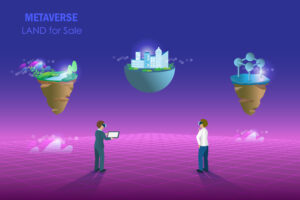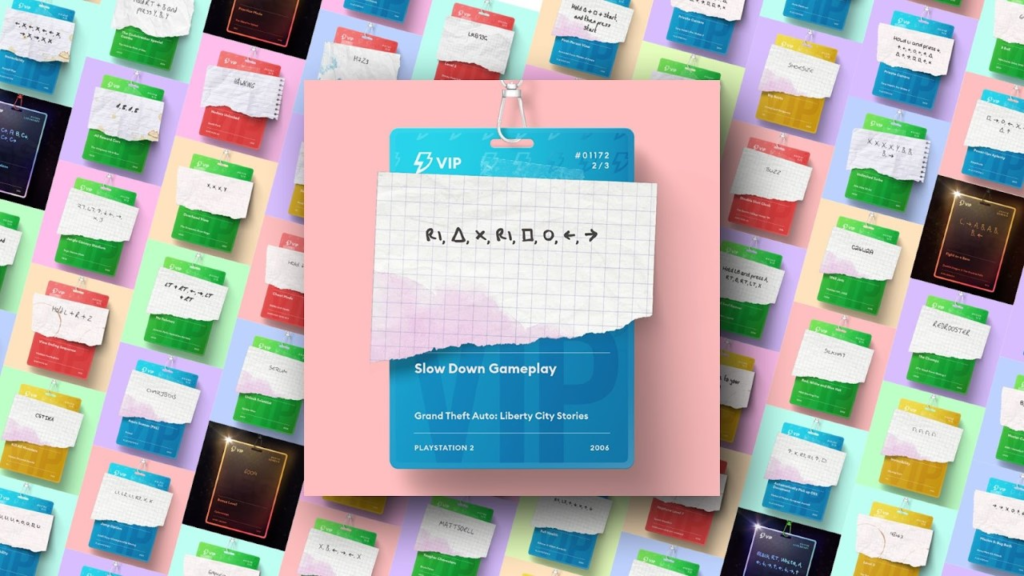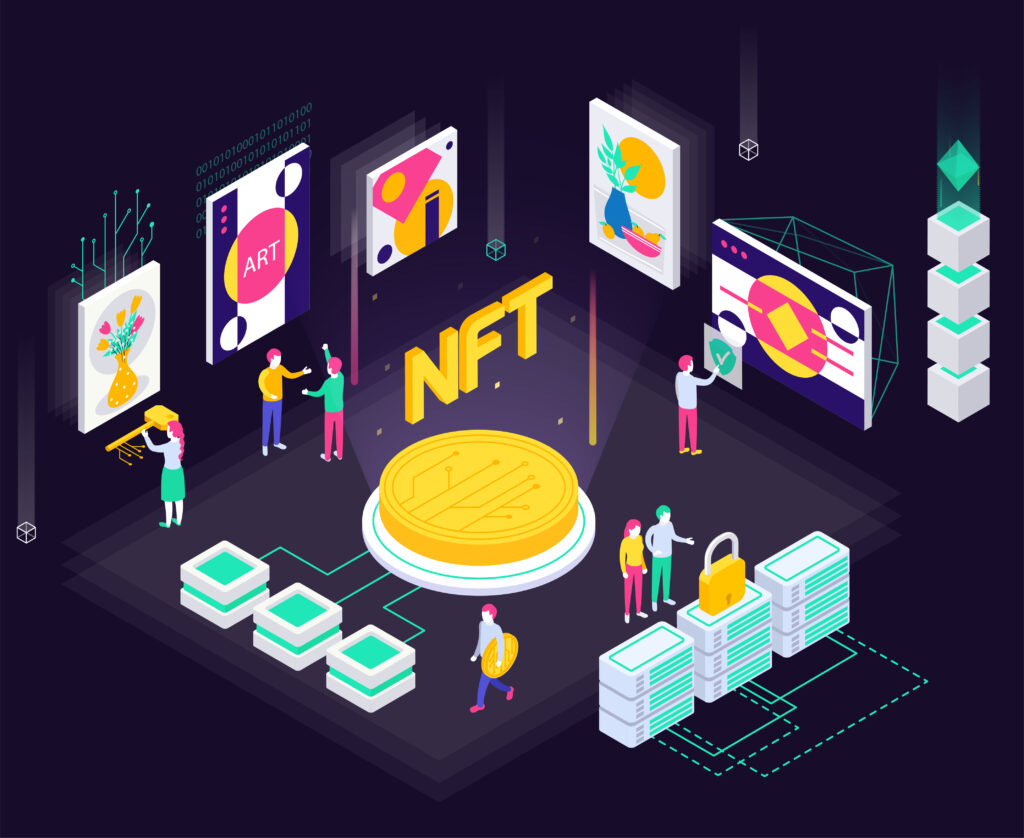
Scalability has always been a problem for blockchains, and it’s the main reason blockchain technology hasn’t reached mainstream adoption. Whether in blockchain fintech—where comparisons of the Bitcoin blockchain’s 10 TPS to Visa’s 24,000 TPS abound—or in other sectors blockchain has touched, this is holding many otherwise promising companies back from delivering new, innovative kinds of value to the public. While larger and better-resourced companies have managed to overcome this problem through sidechaining and/or sharding, there is no substitute for the real thing. DApp scaling frameworks may be a foundation to build widespread solutions to this problem.
What are DApps?
DApps (decentralized apps) use blockchain technology to deliver peer-to-peer value through product offerings, services, or new forms of value. Built on blockchain technology, dApps use its decentralized, trustless, peer-to-peer structure to let users transact between each other without a centralized authority through an encrypted medium (such as NASGO’s platform that we’ve reported on previously).
While this is an otherwise revolutionary solution to the problem of over-centralization, it comes with its own set of baggage. Imagine if every transaction or purchase you made had to be confirmed by a network of other people before completing. This, the consensus protocol—on which Bitcoin, Ethereum, and other leading blockchains are built—is one of blockchain’s greatest strengths, but also one of its greatest weaknesses. For any blockchain to work as intended, every node participating in it has to confirm every transaction that happens on it.
On the positive side, this massively increases transaction immutability, verifiability and transparency. Unfortunately, it also makes transaction per second (TPS) speed very low. Slow processes usually don’t scale. And without scalability, blockchain technology cannot reach mainstream usage. Right now, only about 8 million people globally use any form of cryptocurrency. To reach mainstream usage, 800 million people must consistently use it.
It sounds like a chicken-and-egg problem, but the blockchain space is already developing resources to overcome this issue. DApp scaling frameworks are one way. They are bundles of code inside blockchain protocols that let distributed apps distribute themselves in a semi-scaled way, letting a blockchain scale improve its TPS and allow more transactions than ever before. Unfortunately, not many developers have access to these, and the few that do have only built the earliest versions of this technology, which brings up the question: is this really a workable solution right now?
What We Have Now
DApps are hard interact with. They’re slow, confusing, and rely on 3rd-party software which only the most sophisticated consumers can readily use. Yet the chief issue here is speed—the key performance measurement of all distributed systems is scalability, and without it, dApps have no real business case or value proposition, let alone any realistic user acquisition strategy. Yet there are fixes for this problem, but little implementation and even less progress on their collective maturation. They exist in five categories, below:
1. Low-Level Optimizations
2. Parallel Blockchains (“sharding”)
3. Homogenous Vertical Scaling
4. Heterogeneous Vertical Scaling
5. Heterogeneous Interconnected Multichains
6. Multilayered dApp development toolboxes
There’s not much to be said for the solutions in the first category. Most of them—consensus algorithms, PoS migrations, parallel processing on transactions and code optimizations in the Ethereum Virtual Machine—are low-level and impermanent band-aids to the deeper problem.
The best of the solutions in the second, third, and fourth categories are at this stage still in the proof-of-concept phase, being built almost exclusively by and for Ethereum and Bitcoin, such as projects like Plasma and the Lightning Network. These are getting the most traction here only because they’re developing out of Bitcoin and Ethereum, but are nontheless still are very early-stage.
The idea behind Plasma is to take smart contracts, give them self-governing alongside self-execution properties to let the Ethereum root chain essentially create buds or “shards”—tiny sidechains each monitoring one aspect of a transaction instead of putting that combined pressure on the root chain—to distribute consensus, letting blockchains dramatically scale their TPS. Lightning Network deals more exclusively with payments—it’s a second-layer payment protocol next to the root blockchain, using a peer-to-peer system to let users make cryptocurrency micro-payments. Both platforms are examples of how some blockchain companies are using secondary and tertiary parallel blockchains to scale their TPS.
Concepts like Polkadot—scalable heterogeneous multichains—provide foundations for later functionality in the area of relay-chains, where the goal is to build validatable, globally connected, frequently-changing data structures on top of these frameworks.
Companies like MenloOne—multilayered dApp development toolboxes—create and deploy digital tools for dApp developers to use when they’re building. They include:
- A layer for communication.
- A layer for governance (given lack of server admins to ban malicious users in a decentralized network).
- A local wallet for smooth transactions (no more MetaMask popups).
- A core layer, a network of content nodes which cache mirror versions of blockchain data.
These incorporate fragmented systems to make dApp development easier for professionals.
Together, solutions in these categories are working to help top blockchains scale TPS to thousands per second.To become adopted by the mainstream public, these frameworks will need to use a variety of different tools to make transactions effortless for blockchains to process.
What do you think about the scalability of blockchains today? Is it a problem for you or are you unaffected? And, what do you most want to see happen in this area of blockchain technology in the near future? Post in the comments below to let us know!
















R2f0mVVK crestor generic date
Download your missing dll from binkw32.dll page. Fix the error now!
Sir Elton John is my favourite piano musician of the world. I’m encouraged to present for you this setlist 2019. Check Elton John retirement tour this link to get your best ticket for the final Elton John tour 2019.
Joe Bonamassa is a famous country singer, so don’t miss the possibility to visit Joe Bonamassa 2019
low interest personal loan
loans for bad credit
interest free loans
quick loans for bad credit
cash loans for bad credit
loans for bad credit
quick loans for bad credit
unsecured loans for bad credit
payday loans in houston tx
small loans
loans for bad credit
cash loans for bad credit
loans for bad credit
cash loans for bad credit
loans chicago
payday loans illinois
loans for bad credit
unsecured loans for bad credit
payday loans for bad credit
what is a cash advance
best loans for bad credit
private lenders for bad credit
loans for bad credit
student loan refinancing
personal loans bad credit
bad credit loans
short term loans for bad credit
personal loans bad credit
consolidating loans
short term loans for bad credit
loans for bad credit
personal loans bad credit
quick loans for bad credit
loans for bad credit
best loans for bad credit
100 guaranteed approval payday loans
loans for bad credit
loans for bad credit
regions loans
loans for bad credit
loans for bad credit
monthly installment loans
cash loans for bad credit
payday loans for bad credit
quick loans for bad credit
quick loans for bad credit
loans online guaranteed approval
loans for bad credit
cash loans for bad credit
loan for bad credit
loans for bad credit
loans for bad credit
unsecured loans for bad credit
loans for bad credit
loans till payday
personal loans bad credit
loans for bad credit
best loans for bad credit
where to get a loan with bad credit
loans for bad credit
loans for bad credit
cash loans for bad credit
loans for bad credit
low interest debt consolidation
payday loan places
pay day board game
personal loans bad credit
loans for bad credit
cash loans fast
purchase motrin 600
kamagra
quick money online free
personal loans bad credit
unsecured loans for bad credit
payday loans for bad credit
payday loans bad credit
unsecured loans for bad credit
american payday loan
cash advance loan online
unsecured loans for bad credit
short term loans for bad credit
payday loans bad credit
bad credit catalogues
loans for bad credit
loans for bad credit
short term loans for bad credit
wells fargo loan
loans for bad credit
instant cash loan
cash loans for bad credit
payday loans bad credit
payday loans 100 approved
loans for bad credit
loans for bad credit
best loans for bad credit
loans for bad credit
instant cash loan
loans for bad credit
loans for bad credit
loans for bad credit
low rate personal loans
personal loans bad credit
no fax payday loans
small loans for bad credit
loans for bad credit
loans for bad credit
cash loans for bad credit
cash advance places near me
small loans for bad credit
quick loans for bad credit
loans for bad credit
best loans for bad credit
loans for bad credit
loans for bad credit
credit loans no credit
loans for bad credit
cash loans for bad credit
cash loans for bad credit
short term loans for bad credit
loan to pay off credit cards
loans for bad credit
personal loans bad credit
loans for bad credit
unsecured loans for bad credit
short term loans for bad credit
payday loans online no credit
get a load
very bad credit personal loans
cash advance loan online
unsecured loans for bad credit
quick personal loans
cash loans for bad credit
short term loans for bad credit
loans for bad credit
how to get a loan with no credit
loans for bad credit
how much loan can i afford
loans for bad credit
quick loans for bad credit
short term loans for bad credit
cash loans for bad credit
loans for bad credit
personal loans bad credit
personal loans bad credit
small personal loans bad credit
personal loans bad credit
payday loans for bad credit
loans for bad credit
unsecured loans for bad credit
unsecured loans for bad credit
personal loans bad credit
best loans for bad credit
best loans for bad credit
small loans for bad credit
loans for bad credit
loans for bad credit
apply for a payday loan online
small loans for bad credit
payday loans for bad credit
quick loans for bad credit
payday loans for bad credit
best loans for bad credit
regions loans
payday loans bad credit
unsecured loans for bad credit
quick loans for bad credit
cash payday loan
weekend payday loans
loans for bad credit
bad credit catalogues
cash loans for bad credit
best loans for bad credit
unsecured loans for bad credit
signature loans no credit check
quick loans for bad credit
pay day board game
short term loans for bad credit
payday loans for bad credit
cash loans for bad credit
list of payday loans
very bad credit personal loans
loans for bad credit
cash loans for bad credit
fast loan online
small loans for bad credit
cash loans for bad credit
payday loans for bad credit
loans for bad credit
no fee payday loan
payday loans for bad credit
payday loans for bad credit
quick loans for bad credit
payday loans for bad credit
best loans for bad credit
loans for bad credit
loans for bad credit
loans for bad credit
small loans for bad credit
loans for bad credit
payday loans for bad credit
payday loans bad credit
cash loans for bad credit
quick loans for people with bad credit
short term loans for bad credit
loans for bad credit
personal loans bad credit
consolidated loans
long term loans for bad credit
emergency loan no credit check
personal loans bad credit
easy installment loans online
loans for bad credit
small loans for bad credit
payday loans for bad credit
short term loans for bad credit
loans for bad credit
unsecured loans for bad credit
loan for bad credit
easy installment loans online
unsecured loans for bad credit
cash loans for bad credit
emergency loan no credit check
loans for bad credit
unsecured loans for bad credit
loans for bad credit
loans for bad credit
what is a cash advance
loans for bad credit
short term loans for bad credit
loans for bad credit
payday loans bad credit
loans for bad credit
loans for bad credit
loans for bad credit
unsecured loans for bad credit
loans for bad credit
loans for bad credit
how do payday loans work
where to get a loan with bad credit
loan consolidation companies
pay day board game
loans for bad credit
loans for bad credit
quick loans for bad credit
credit loans no credit
small loans for bad credit
quick loans for bad credit
cash express loans
payday mask
loans to build credit
payday loans for bad credit
cash loans for bad credit
quick loans for bad credit
cash advance loan online
cash loans for bad credit
payday loans bad credit
loans for bad credit
small personal loans bad credit
payday loans bad credit
cash loans for bad credit
cash loans for bad credit
small loans australia
loans for bad credit
loans for bad credit
loans for bad credit
loans for bad credit
credit card loans
unsecured loans for bad credit
loans for bad credit
loans for bad credit
loans for bad credit
payday loans for bad credit
instant cash loan
debt consolidation program
loan signing
loans for bad credit
loans for bad credit
loans for bad credit
best loans for bad credit
payday loans for bad credit
cash loans for bad credit
small loans for bad credit
quick loans for bad credit
payday loans for bad credit
loans for bad credit
loans for bad credit
loans for bad credit
no fax payday loans
short term loans for bad credit
personal loans bad credit
loans for bad credit
loans for bad credit
loans for bad credit
cash loans for bad credit
loans for bad credit
loans for bad credit
payday loans for bad credit
cash loans for bad credit
payday loans in houston texas
small loans for bad credit
cash loans for bad credit
best loans for bad credit
loans for bad credit
payday loans bad credit
best loans for bad credit
unsecured loans for bad credit
loan consolidation companies
best loans for bad credit
loans for bad credit
loans for bad credit
quick loans for bad credit
unsecured loans for bad credit
how do payday loans work
unsecured loans for bad credit
loans for bad credit
short term loans for bad credit
loans for bad credit
micro loans
teacher loan
unsecured loans for bad credit
quick loans for bad credit
loans for bad credit
payday loans for bad credit
loans for bad credit
short term loans for bad credit
payday loans bad credit
loans for bad credit
paydayloans online
personal loans bad credit
emergency loan no credit check
payday loans bad credit
loans for bad credit
loans for bad credit
loans with bad credit
loans for bad credit
loans for bad credit
loan approval
bad credit direct payday lenders
personal loans bad credit
quick loans for bad credit
loans online guaranteed approval
loans for bad credit
payday loans bad credit
loans for bad credit
loans for bad credit
cash loans for bad credit
quick easy cash
personal loans bad credit
weekend payday loans
quick loans for bad credit
loan store
loans for bad credit
cash loans for bad credit
loans for bad credit
loans for bad credit
loans chicago
payday loans online no credit
payday loans bad credit
canadian pharmacies online prescriptions
canadapharmacy
canada pharmacy
canadian pharmacies online
Hello would you mind sharing which blog platform
you’re working with? I’m looking to start my own blog soon but I’m having a hard time selecting between BlogEngine/Wordpress/B2evolution and
Drupal. The reason I ask is because your design and style seems different then most blogs and I’m looking for something
unique. P.S Apologies for getting off-topic but I had to ask!
best online pharmacies canada
best online pharmacies canada
discount canadian pharmacies
best online pharmacies canada
Thank you for the auspicious writeup. It
in fact was a amusement account it. Look advanced to far added agreeable from you!
However, how can we communicate?
Do you have a spam issue on this site; I also am a blogger, and I was wanting to know your situation; we have created some
nice methods and we are looking to trade techniques with others, why not shoot me an email if interested.
Greetings from Los angeles! I’m bored to death at work so I decided
to browse your blog on my iphone during lunch break.
I enjoy the info you provide here and can’t wait to take a look when I get home.
I’m shocked at how quick your blog loaded on my phone ..
I’m not even using WIFI, just 3G .. Anyways, good site!
canadian pharmacies online
Greate pieces. Keep writing such kind of information on your
site. Im really impressed by your site.
Hey there, You have done a great job. I’ll definitely digg
it and in my opinion suggest to my friends. I am sure
they will be benefited from this website.
list of approved canadian pharmacies
Wow! In the end I got a webpage from where I know how to really obtain helpful facts concerning my study and knowledge.
Just wish to say your article is as astounding. The clearness to
your post is just great and i could suppose you are a professional on this
subject. Fine along with your permission allow me
to clutch your feed to keep up to date with
approaching post. Thanks a million and please continue the enjoyable work.
Some genuinely great info, Glad I observed this.
hydroxychloroquine for lupus https://azhydroxychloroquine.com/